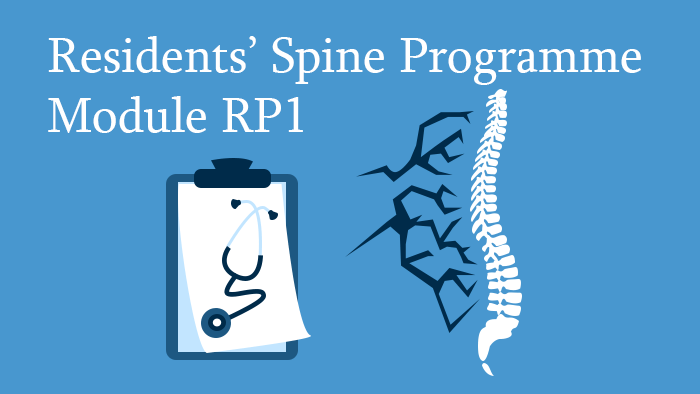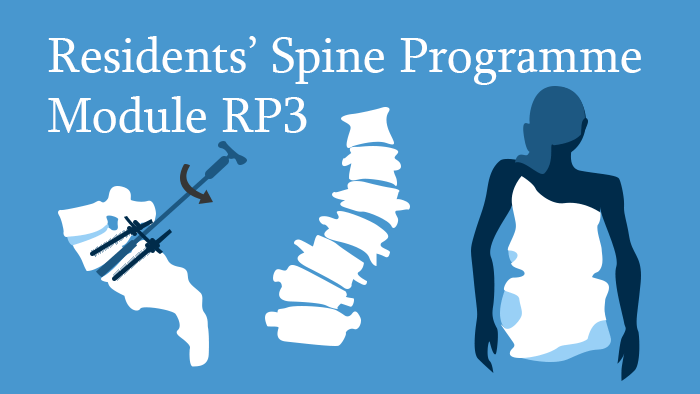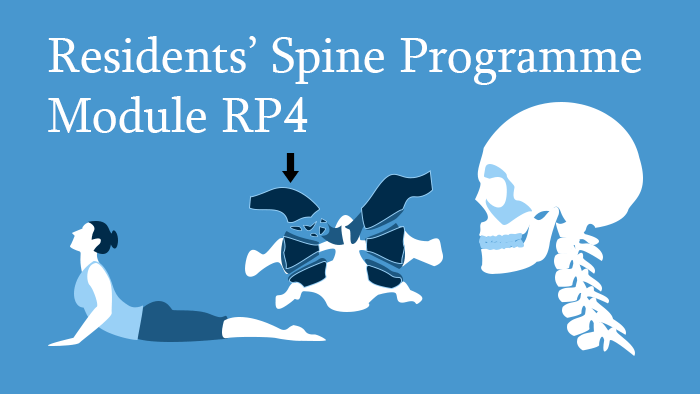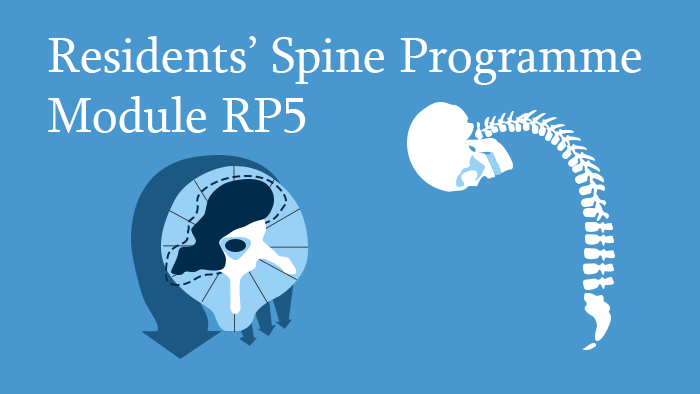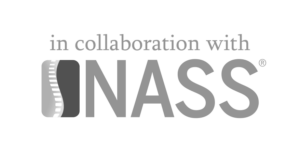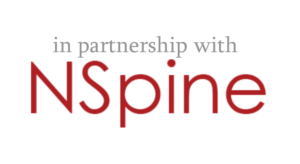Residents’ Spine Programme
Enrolment Fee:
€149 per module
€649 for the full course
The Residents’ Spine Programme is an online course for all Orthopaedic and Neurosurgical Residents looking to boost their knowledge and skills in spine or obtain a spine fellowship.
The course includes:
60 Spine Lectures in 5 Modules
Each Module has 12 Lectures, with each lecture taken from our full Diploma in Spine Surgery
120 Quizzes and Assessments
Over 500 Downloadable References
180 CME Credits
12 Months Access
Certificate of Completion
Why study this course?
World-class spine education
Fits around your schedule
With our online courses, you can study whenever you like, wherever you are – and fit it around your busy schedule.
CME Accredited
Read a textbook on spine surgery and no-one will know, but complete our course and you will gain 180 CME Credits as proof of your interest to put on your CV / Resume.
Progress your career
Completing this course gives you the solid knowledge foundation required for our Diploma, and sets you apart when applying for Spine Fellowships.
Enrolment
It takes approximately 3 hours of study to complete each Lecture, with study material and references readily available for those who want to find out more. Each Module can be completed in 2-3 months, and the whole Programme in 6-12 months.
You can enrol and start the Residents’ Spine Programme immediately. Either enrol on the full programme at once and save €96, or spread the cost by enrolling on individual modules for €149 each.
Residents’ Spine Programme
Enrolment Fee: €649
More information
Includes:
- 60 Online Spine Lectures
- 120 Quizzes and Assessments
- Over 500 Downloadable References
- 180 CME Credits
- 12 Month Access
Learning Objectives of this Module:
To provide residents with a solid understanding of the principal pathologies, diagnostic techniques and treatment strategies to manage patients with spinal disorders. It is qualified by objectively measurable criteria of knowledge and skills.
This is reached by:
- Enabling the candidate to cover the fundamentals of spine surgery through the guidance of basic knowledge lectures given by experts in the field by means of an ‘interactive textbook’.
- Enabling the candidate to access pre-selected additional knowledge resources to enhance his/her knowledge and skills in the field of spine surgery beyond the basic knowledge.
- Mastering knowledge of the anatomy relevant to the various surgical accesses used in spine surgery.
- Enabling the candidate to analyse and accurately diagnose the principal spinal disorders and to propose appropriate and effective treatments.
- Enabling the candidate to choose and apply the correct patient outcome tools for appropriate follow up.
Modules of this course
More Information
Includes:
- 12 Online Spine Lectures
- 24 Quizzes and Assessments
- Over 50 Downloadable References
- 36 CME Credits
- 3 Month Access
Lectures and Topics Covered:
- Pathways to Spinal Pain
- Clinical Findings, Pathophysiology and Natural History of Cervical Radiculopathy
- Cervical Radiculopathy – Non-Operative Management
- Clinical Presentation and Diagnostic Workup of Disc Herniation, Radiculopathy and Thoracic Myelopathy
- Non-Operative Treatment, Rehab and Medication in Lumbar Disc Herniation
- Clinical Presentation and Diagnostic Workup of Degenerative Lumbar Spondylosis
- Imaging in Degenerative Lumbar and Sacroiliac Conditions
- Management of Non-Specific Low Back Pain
- Imaging of Sub-Axial Cervical Spine Injuries
- Classification of Sub-Axial Cervical Spine Injuries
- Imaging of Thoracolumbar Injuries
- Classification of Thoracolumbar Fractures
Learning Objectives of this Module:
- To understand the basic pathways to spinal pain.
- To understand the pathophysiology, natural history and diagnostic workup of cervical radiculopathy, and its non-operative management.
- To understand the role of imaging in degenerative lumbar disease, the diagnostic workup of lumbar radiculopathy, the management of non-specific low back pain and non-operative management options.
- To understand imaging modalities, and classification systems for cervical and lumbar fractures.
More Information
Includes:
- 12 Online Spine Lectures
- 24 Quizzes and Assessments
- Over 50 Downloadable References
- 36 CME Credits
- 3 Month Access
Lectures and Topics Covered:
- Applied Surgical Anatomy of the Cervical Spinal Column
- Idiopathic Scoliosis in Adults – Specificities 20-50 years old
- Cervical Myelopathy – Pathophysiology, Clinical Findings and Imaging
- Disc Herniation – Epidemiology, Pathogenesis, Natural History and Risk Factors
- Spinal Stenosis – Non-Operative Treatment, Rehab and Medication
- Lumbar Spondylosis – Epidemiology, Pathogenesis and Natural History
- Lumbar Spondylosis – Non-Operative Treatment
- Degenerative Lumbar Spondylosis – Surgical Treatment
- Psychosocial Factors in Low Back Related Conditions
- Spine Trauma – Clinical Presentation and Diagnostic Workup
- Thoracic and Lumbar Spine Trauma – Clinical Presentation and Diagnosis
- Thoracolumbar Spine Fractures – General Principles and Indication for Conservative Treatment
Learning Objectives of this Module:
- Understand the surgical anatomy of the spine
- Understand the pathology, natural history and non-operative management of cervical myelopathy.
- Understand the epidemiology, pathogenesis, natural history and risk factors of lumbar disc herniation and lumbar spondylosis
- Understand the surgical and non-surgical options for the treatment of lumbar spondylosis
- Understand the psychosocial factors in low back pain conditions
- Understand the basics of non-surgical treatment of spinal stenosis
- Understand the clinical presentation and diagnostic work up of spine trauma cases and indications for conservative treatment of thoracolumbar spine fractures.
More Information
Includes:
- 12 Online Spine Lectures
- 24 Quizzes and Assessments
- Over 50 Downloadable References
- 36 CME Credits
- 3 Month Access
Lectures and Topics Covered
- Degenerative Spondylolisthesis – Epidemiology, Diagnosis and Classification
- Degenerative Spondylolisthesis – Surgical Treatment
- Low Grade Adult Spondylolisthesis – Evidence-Based ‘Best Surgical Practice’
- Idiopathic Scoliosis – Natural History
- Paediatric Deformities – Imaging
- Indication for Brace Treatment
- Bone Fusion in Spinal Deformity
- Spinal Metastasis – Diagnosis and Staging
- Metastatic Disease – Surgical Treatment Options and Results
- Spinal Tuberculosis – Diagnostic Tests and Medical Management
- Antibiotic Treatment of Vertebral Osteomyelitis, Discitis and Epidural Abscess of the Spine
- Post-Operative Infection in the Spine – Prevention and Treatment Strategy
Learning Objectives of this Module:
- Understand the epidemiology, diagnosis, classification and surgical treatment of degenerative spondylolisthesis
- Understand the role of imaging and indications for brace treatment in paediatric deformity
- Understand the natural history of idiopathic scoliosis and bone fusion in spinal deformity
- Understand the diagnosis, staging and surgical treatment options in spinal metastatic disease
- Understand the principles of antibiotic treatment of infections in the spine
More Information
Includes:
- 12 Online Spine Lectures
- 24 Quizzes and Assessments
- Over 50 Downloadable References
- 36 CME Credits
- 3 Month Access
Lectures and Topics Covered
- Cervical Myelopathy – Natural History and Non-Operative Management
- Sacroiliac Joint Pain – Evaluation and Treatment
- Adult Scoliosis and Kyphosis – Radiological Asessment
- Degenerative Scoliosis: Clinical Presentation and Diagnostic Workup
- Degenerative Scoliosis and Stenosis
- Scheuermann’s and Idiopathic Kyphosis – Treatment Options
- Upper Cervical Spine – Instability and Specific Anatomical Structures
- Imaging of the Occipito-Cervical Junction Post-Trauma
- Classification of Upper Cervical Spine Trauma
- Primary Tumours of the Spine – Differential Diagnosis, Epidemiology and Diagnostic Workup
- Antibiotic Treatment of Spinal Wound Infections
- Neurological Complications
Learning Objectives of this Module:
- Understand the non-operative management of cervical myelopathy
- Understand the evaluation and treatment of sacroilliac joint pain
- Understand the assessment and treatment options in degenerative scoliosis, kyphosis and stenosis
- Understand the anatomy, imaging and classification of fractures in the upper cervical spine
- Understand the diagnosis of primary tumours in the spine
- Understand the treatment of wound infections and neurological complications in spine surgery
More Information
Includes:
- 12 Online Spine Lectures
- 24 Quizzes and Assessments
- Over 50 Downloadable References
- 36 CME Credits
- 3 Month Access
Lectures and Topics Covered
- The Continuum from Degenerative Conditions to New Onset Deformity
- Ankylosing Spondylitis (AS)
- Sagittal Balance in L5-S1 Spondylolisthesis
- High Grade Spondylolisthesis (SPL) – Analysis and Surgical Techniques Indications
- Technique, Strategy and Indication in Posterior Approaches – Hybrid Construct
- Chordoma of the Spine
- Aneurysmal Bone Cysts of the Spine – Epidemiology, Diagnosis and Management
- Chondrosarcoma of the Mobile Spine
- Giant Cell Tumours of the Spine
- Ankylosing Spondylitis – Epidemiology, Pathophysiology and Symptoms
- Diagnosis and Treatment of Instability of the Occipito-Atlantoaxial Spine in Rheumatoid Arthritis
- Post-operative Wound Problems
Learning Objectives of this Module:
- Understand the disease continuum from degeneration to new onset deformity
- Understand the natural history, diagnosis and treatment of ankylosing spondylitis
- Understand the diagnosis and treatment of high grade spondylolisthesis
- Understand indications, techniques and strategy in posterior approaches to the paediatric spine
- Understand the epidemiology, diagnosis and treatment of chrondrosarcomas, giant cell tumours, chordomas and aneurysmal bone cysts
- Understand the diagnosis and treatment of instability in the occipito-atlantoaxial spine
- Understand post-operative wound problems in more detail

